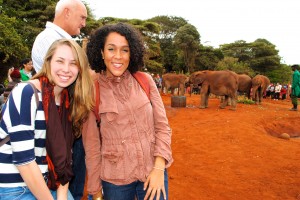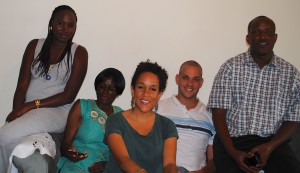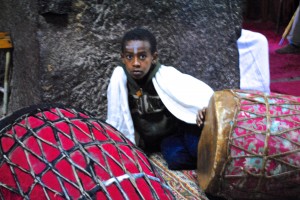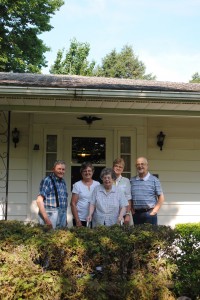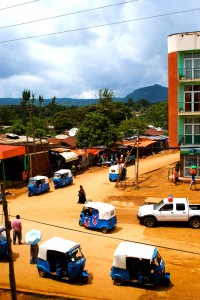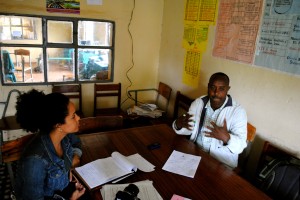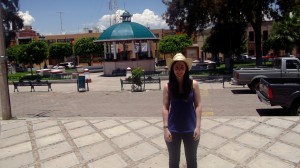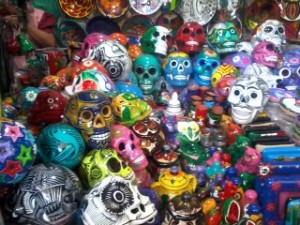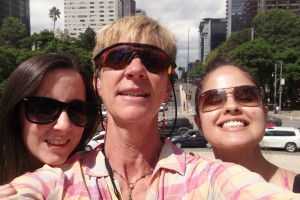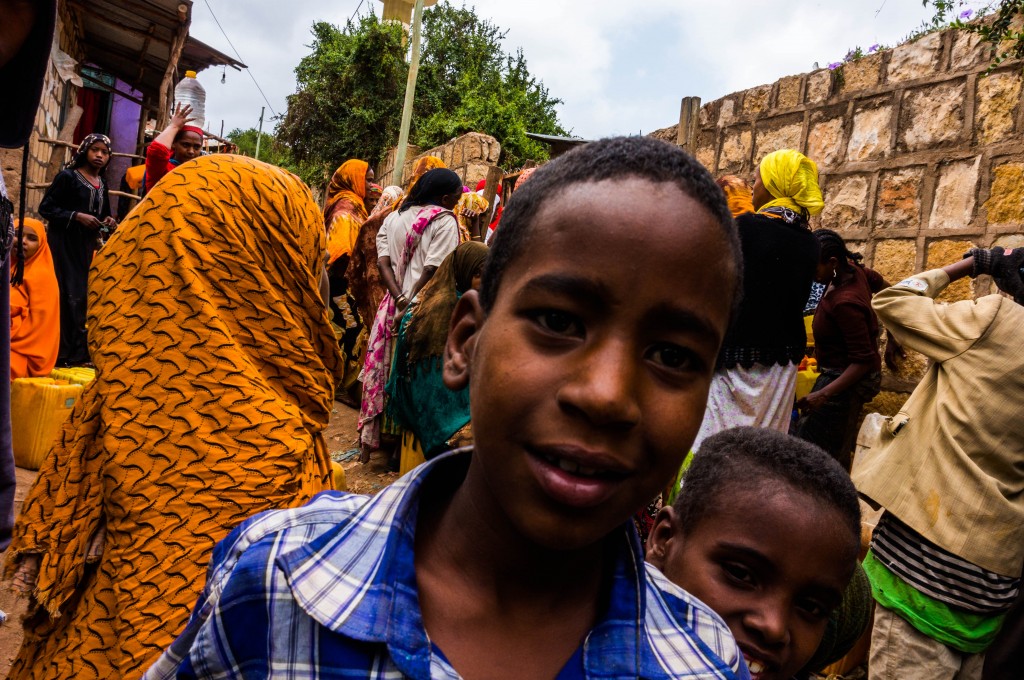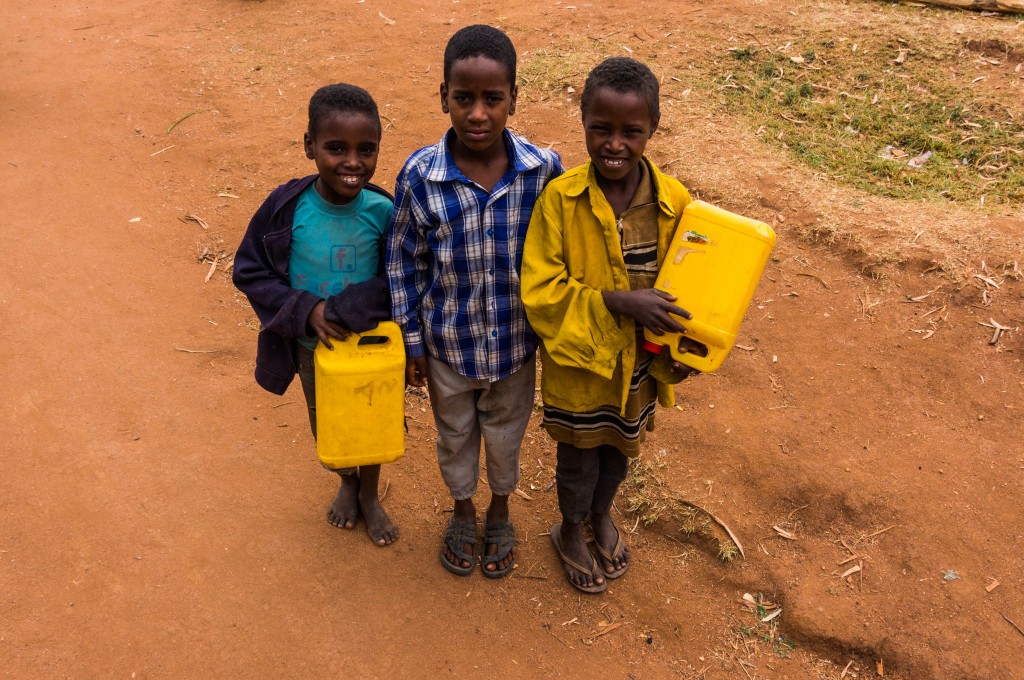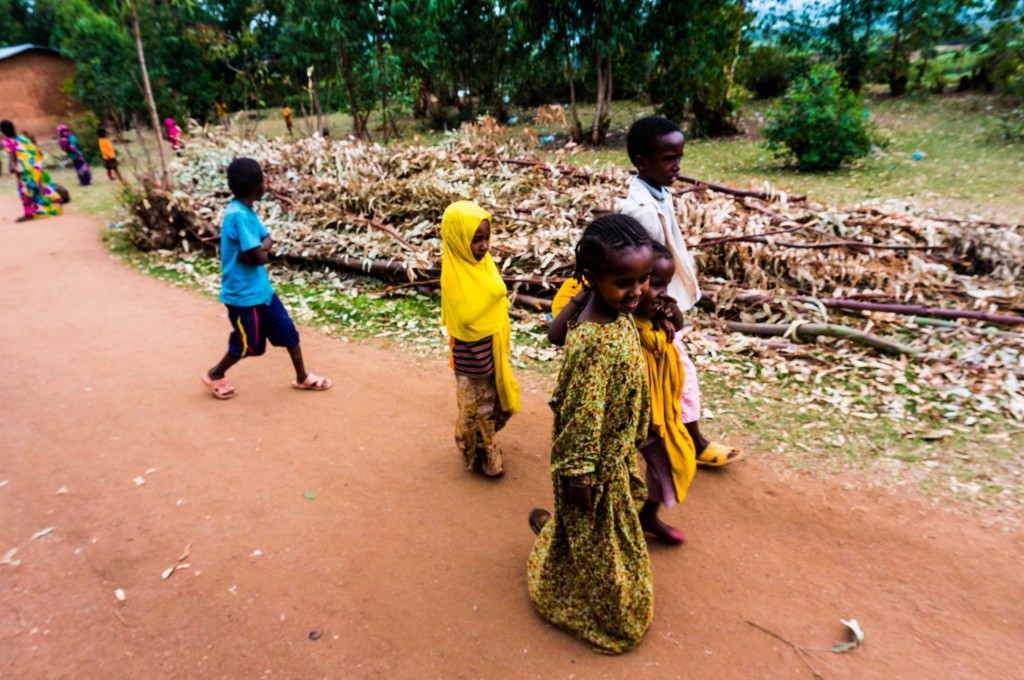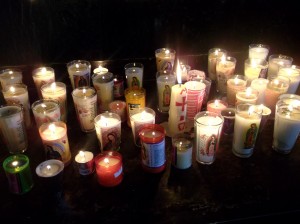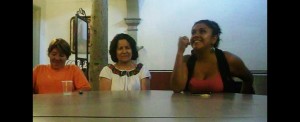Archive for August, 2014
Birthday
Posted by Katie Petitt in Ethiopia, Katie Petitt on August 29, 2014
Today I turn 27. Today, 27 years ago, my mom was 27 years and 27 days old. I always thought when I was 27, I would have my first child, and why not? It is a good age to have a kid, and many of my friends are at that stage in life. I always thought that at the magic age of 27 I would catch the baby bug and want a family of my own. Instead, I have the travel bug and I might as well be 27 years away from having my first child.
Today instead of embracing motherhood, I embrace another adventure. The last 13 months have been a wonderful whirlwind of travel and exploration. I lived and studied in Costa Rica with some of the most beautiful people on earth, and saw some of the most beautiful tropical environments known to man. I traveled Central America, learning more about my American neighbors and enjoying their company. I spent 2 months in Ethiopia, traveling and hearing both heartbreaking and inspiring stories about one of life’s most essential elements: water. And now I get to fulfill a childhood dream and go to Kenya.
When I was 7 my teacher assigned us a project where we had to research a country of our choice. Now Lion King had just been released and I was of the age where I was learning about my African-American ancestors and slavery. My dad always believed we came from Kenya, and this made me love the Lion King even more (I am also part Native American and had a great love for Pocahontas too. In my mom’s defense, Disney movies were not the only way I learned about these cultures- at the age of 7 these were just the most enjoyable). Needless to say, I chose Kenya for my country of choice and presented my well-researched tri-fold board on my new favorite place. Ever since that time 20 years ago, I have wanted to go to Kenya. I lived in South Africa and that was close, but it was too expensive to visit. When I found out I was going to Ethiopia for this fellowship and just how close I would be, I knew I had to finally go to Kenya and fulfill a dream many years in the making.
Life is a funny adventure that takes you many places throughout your journey. I love the journey and find it constantly changing my beliefs about what I thought was true before. This life-journey teaches me that the more I see, the less I know. It is a challenging but beautiful lesson that feels like standing in a star-filled sky looking up and realizing just how small you are, but also realizing the beauty and majesty that is this world.
Every year there is a meteor shower around my birthday. My mom and I used to sit outside on our front yard and watch the stars fall down around us in the big Texas sky. I always loved these nights and feeling small, yet beautiful, and immensely lucky to take part in it all. 27 years of life lived, and it has not been what I expected, but I am looking forward to the journey.
Lalibelia
Posted by Katie Petitt in Ethiopia, Katie Petitt on August 29, 2014
We are traveling for about 5 days, not as storytellers but as tourists. It is said that if you go one place during your time in Ethiopia, it should be Lalibelia. Lalibelia is a town with a collection of 12th and 13th century churches that are carved out of rock, and still used today. We flew here with a friend we met on the road, and the 3 of us have been looking forward to our time around the churches, mostly due the hype built up by our tour guide books (locally called foreigners’ bibles). We went to see the first and most impressive batch of churches yesterday afternoon as soon as we arrived. Now I have to be honest, I was impressed with their beauty, but not blown away like the good-book Lonely Planet had said. Maybe we can just chalk it up to the food poisoning I am still suffering from 2 days later, or the long travel day. Whatever it was, it was not until we entered the largest of the churches the next morning for Sunday worship that the real beauty of this place really hit me. The worshipers were all dressed in white scarves and cloaks that they tie and fashion a hundred different ways. This clean and ancient looking attire, with the backdrop of the ancient earthy red buildings make you feel you have gone back in time about 1,000 years. Not much has changed with the religion or practice since the churches were first created, and it was a small girl who is turning 11 tomorrow who made me realize just how magical it was to be there.
Once we entered the church, I thought we would be gawked at and given the familiar finger shake I have grown accustomed to as I take photos around the country. Instead, I met this girl as I waited in a mass of people to get a glimpse of a 7kg gold cross that only comes out on Sundays. This little girl very sweetly asked where I was from and what my name was. I told her and asked her the same. She told me how konjono I am (compliments always accepted) and I repaid her the compliment and knew we would be friends. She asked if I liked the service and I told her of course I did. She took me to the different stations around the church and encouraged me to really look at them. There was a finely dressed priest offering the Lalibela cross (the seal of this region) to be kissed for a blessing. In the corners old women and children sat surrounded by their white scarves as they sat quietly and reflectively. Wandering around was another priest offering to place white ash on the foreheads of all who desired it. In the center, a half circle of priests and deacons chanted the Bible in the ancient language of Ge’ez, singing historical hymns and playing the traditional drums.
My new friend took me by the hand and we bounced from station to station. She was so excited to show me these things and to share this special place and culture with me. At one point she disappeared, and I made new young friends who were also eager to welcome me into their spiritual home and make sure I was comfortable. A few minutes later my first friend came back and she pulled my hand so I would bend down. She reached up to my forehead and placed the white ash on my head, smiling all along. Growing up, I went to Ash Wednesday services and had black ash placed on my head by pastors. It was always a nice evening that I enjoyed as a kid, but being blessed by a child stranger was quite konjono.
Farming
Posted by Katie Petitt in Ethiopia, Katie Petitt on August 29, 2014
This time last year I was on my family’s corn and soy farm in Central Illinois. It was a great experience: I got to ride tractors, see a newborn calf, go to the annual ice cream social at the church my grandparents were married in, and learn about my family’s history. My grandma grew up on this farm with her 7 brothers and sisters, and her father grew up on the same farm before her. I love the history of this place and the idea of farming for a living; to feed ones family and others.
My grandma grew up with parents who were sustenance farmers. Her parents and brothers grew what they needed to feed their family, and the rest of what they grew, raised or made would go to support other needs and to invest in more land. On the other side of my family, my grandpa was a pastor’s son, but his family raised rabbits to sell for meat. When my grandparents were growing up, the US was around 18% agricultural. Farms are still important in the US now, but with Monsanto, Tyson and other huge industries, food and farming isn’t the family trade it use to be.
Here in Ethiopia, the society is highly agricultural. 80% of the country’s economy and population is agricultural, and this week we have been out in the thick of it. We are in Harar, Ethiopia, in the central part of the country, about 12 hours (via bus) east of Addis Ababa. The drive was really beautiful, although I slept through most of it. The road is lined with small sustenance farms. Here in Harar we visited a village where many of the community members are farmers growing grain, potatoes and chat. This village, and I can imagine many of the villages we passed, has no irrigation and relies on the rain. The rain here is essential, and as of right now the rain is late. The farmers are worried every day and are ready for the rainy seasons to begin.
Growing up, my grandma would always keep me informed on how her brothers were doing on the farm and what the rain and weather were doing to their crops. They have huge irrigation systems, yet are still highly reliant on the weather. I can’t imagine how stressful it must be for these farmers in the Harar region who are farming without irrigation or a water catchment systems. The weather is becoming drier in this region and the rains are less and less reliable with climate change.
I love to grow things, to start something from a seed and watch it grow. I use to have urban gardens and it was always so nice to eat the things I grew and share them with friends. As a highschooler I dreamed of going to some far off place kind of like Harar, Ethiopia, and becoming a sustenance farmer. I longed for a simple life where I could spend time outside, build great relationships and not worry about much else. I know now that farming is not as easy as I once thought, and when food doesn’t grow then there is no food for the table. Yet, I still have such a respect for the farming profession. Farmers give food, and like water, food is life.
Crooked Roads: A Tale of Ethiopia
Posted by Katie Petitt in Ethiopia, Katie Petitt on August 29, 2014
Phoenix and I spent a long, but good morning interviewing different community leaders in Jimma, one of the towns we were visiting. We listened and learned, and when it was time to go we politely excused ourselves. Instead of walking back to our hotel alone, one of the community leaders offered to walk us back because his house was on the way. We agreed thankfully and the 3 of us went on our way. The walk allowed us to talk about many things. In fact our conversations were quite philosophical and included our life ambitions, politics, religion and just what life is like in the town we were walking. As we neared the hotel I commented on the good quality of the road. I had read that it was new and it still looked it, yet there were large pot holes in some areas (the road was built on a swamp and I guess with that comes quick deterioration). Our new friend confirmed that the road was new and was put in 2 or 3 years before. As we passed over a small bridge our walking guide stretched out his arm and pointed to the road that went out in front of us. He asked if we saw the bend in the otherwise straight road. Looking down the horizon just a bit, we could indeed see how the road turned. As we looked on, we wondered at the importance of such a seemingly small fact. Our friend went on as he told us to not believe anyone who claims that Ethiopia does not have corruption. He said that because of local corruption, even the roads are crooked.
As he said this he paused, giving me time to wonder if this was a metaphor or if there was more to this story. As we walked towards the bend, I had to ask for him to go on- a good storyteller always likes to be cheered on. He continued by saying that the road was supposed to go in a straight line through Jimma. As construction plans were made, the buildings and homes in the way of this significant paved road- the only in the town and the most important- were slated to be torn down and their inhabitants moved. Yet on this road, just past the river we were crossing, was a rich man who had a home lying in the path of the construction and the soon-to-be road. The rich man saw no need to relocate and paid the contractors to divert the road around the house. The contractors were corrupt and happily agreed to the bribe. They diverted the road around the man’s house, creating the crook we saw before us. Our narrator laughed and shook his head at the symbolism embedded in this imagery, as we turned with the road and on to our hotel.
Interviews
Posted by Katie Petitt in Ethiopia, Katie Petitt on August 29, 2014
The other day I was looking at film I have of our 2nd interview, and I thought to myself: ‘Wow I am really in Ethiopia… this is crazy’. The film and the interview take place in a a northern neighborhood of Addis. In this area of the city there is no running water. There hasn’t been for around 2 years. Instead, the government has a water tank that they fill 2x a day. For the interview we went to see the lines that cue at the tank. The residents here (mostly children and women, as well as young men who make this their business) fill these 20 lb – 40 lb jerry cans again, and again throughout the day so they have enough to wash with, clean with, cook with and sometimes drink. 20 jerry cans are needed to do laundry for a family, to give you an idea of just how often they come to the tank. Each jerry can is 20 cent bir and they hold 20 liters. Please look for our upcoming final project to listen to the interviews and learn more about this area.
I say all this in part to tell you that sometimes I am just shocked that I am here in Ethiopia. It is a beautiful place and I love it, but it is still an adjustment. Today we went on our 4th interview. We have left Addis for the first time and have traveled southwest to a city called Jimma. We have a contact here who is pretty much amazing. He invited us to a graduation today, and Phoenix and I were very much looking forward to it. At first we thought it was his graduation (his 2nd BA), but we missed that by one day and instead went to the secondary school where he teaches environment, sustainability and chemistry. Today happened to be the 9th grade graduation (about 500 students in a school well over 1,000 for 9th and 10th grade – with only 14 teachers). We were shown the school grounds and then ushered into meetings with the school leaders. We learned about the good work the school is doing despite limited resources, and they bragged about the quality of teachers they have at their school (I am a big fan of schools that love their teachers since my husband is a teacher). After we learned about water issues in the school and in Jimma at large, we were asked to sit under a tree to join the celebration. We were given a seat of honor next to the principal and other leaders. It was again one of those surreal moments where I just couldn’t believe where I was. Colorfully dressed women and girls, and dapper men and boys squeezed into the school benches they brought out from the classroom. This meeting under a tree included traditional songs and music, drama and long-winded speeches from many people. Awards were given to the top students and the crowd looked on with pride as these star pupils were given dictionaries wrapped in shiny Christmas paper. 


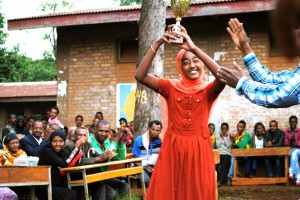
As I look at Ethiopia all around me, I am continuously in awe that I get to be apart of it, even for a short time. I am learning so much and it has already been a great adventure.
See you soon Mexico
Posted by Ainhoa Martinez in Ainhoa Martinez, Mexico on August 10, 2014
Today is my last day in the field and I am packing everything and getting ready to come back home after 2 months of great moments in this wonderful country.
It is a mixture of feelings what I feel about Mexico. I hate it and love it at the same time. The main reasons to hate it are security issues and the situation of women. However, after travelling to different countries one get used to deal with this problems: be home before it gets dark, don’t go to dangerous areas in the city, control the time when you move around the city, you can feel safe as long as you see women and kids around you, don’t wear anything flamboyant, if somebody bothers you don’t start a fight (just avoid that person and try to leave the situation in th better way you can)… The situation of women is complicated, there is a lot of “machismo”, but at the same time you can find the most polite people in the word. I have been lucky to find always the right people and had no problem.
Travelling by bus around the country has been pretty nice. Companies usually offer good prices for students and the buses were very comfortable. At the beginning I wasn’t sure this was going to be like this. I mean, everyone knows about the insecurity problems of this country, but it was okay. You just have to keep an eye on the time you get the bus and the time you arrive to your destination (preferably during the day).
Leaving this apart, I want to focus on the good things I hve been able to see and live. Mexico has very bad reputation, but it is like any other country You will be safe as long as you don’t get in troubles. Also, you can have a different view from this country depending on where you are living. When I go abroad, I always try to live in the student area of the city, close to universities. Because you will always find a good atmosphere there, with transportation and other services. And it is also a good way of living the real life of the country. For example, here there is a world between the live in the center and univerity area (although Coyoacan area is wonderful). And I don’t need to tell you if we compare it with other marginal places in the city, you can imagine. Some friends of mine had been working in Mexico City in the past and living in other areas, but we have very different opinions about this country. Mine is good.
Out of Mexico things always are focused in drugs and kidnapings. What is a reallity that I won’t deny, but it makes us blind and doesn’t let us see how rich and wonderful this country is:
THE FOOD: Mexican food is my favorite one from now onwards. And what I like most is that I have been able to learn how to cook it. Cheap, delicious and 100% natural food, with no additives. In fact, I have been eating properly and doing some execise during the fellowship and now I feel much more healthier. And another good thing is that I finally got used to spicy!
THE NATURAL ENVIRONMENT: Mexico and Latin America in general are the lungs of the world. I have read about it in the past, but being able to watch those amazing natural spaces with my eyes has been delightful. However, when we visited El Salto (Jalisco) and Tlaxcala to see how industries threw toxic substances into the rivers, it was disgusting. I want to mention one of the most hurtful truths Enrique (from “Un Salto de Vida” organization) told me when we were in El Salto: “Nature does not charge interest to companies”.
THE PEOPLE: before comming here I was told “although you find people so so kind, do not trust anybody at all”. I think that suggestion could be applied to every trip around the world and I have been cautious with the people I met and the information I shared. But what I have found here is extremely polite people, in any context. That’s why it’s crazy to see that at the same time you know how women situation is here. Anyway, it’s a place full of contrasts. I don’t know in the US, but unfortunately in Spain Mexican people have bad reputation for being lazy people. I want to take this opportunity to say it is a huge and false prejudice. Mexican people are the most hard-working people I have ever seen. Waking up at 4 am to work endless hours, earn too low wages and come back home to take after your family. Whoever thinks mexicans are lazy people is deeply wrong.
THE CULTURAL ENVIRONMENT: I feel I have addapted well to living here because Mexican culture has a lot of influence from the Spanish. Some places I have visited reminded me of Spain. For example, Guadalajara was very similar to Zaragoza (a city in Spain). Apart from the similarities, I love Mexico City because it is easy to find any cultural activity. There is so much live in the place! Theatres, book markets in the streets, free concerts, choirs, people playing music in the streets, orchestras, art galleries, museums … My favourite ones were Rivera paintings and the Antropology Museum. You cannot leave Mexico City without visiting them.
THE ARTS AND CRAFTS: walking throught the street “mercados” was really nice. You could talk to local people and watch all kind of handmade crafts. I am bringing with me some of them to Spain, but if I could I would have bought everything there, hehe, it was beautiful.
I hope next year the fellowship continues and other fellows are sent to Mexico again. I will be happy to talk to them and give a lot of suggestions.
I want to show you some pics from our best moments here:

This is the “mercado” in the center f Coyoacan. Our favourite place to eat and have a big orange juice.
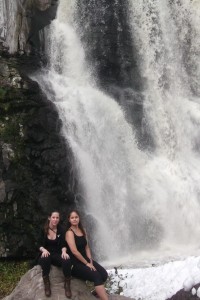
We are at the bottom of “El Ahogado” waterfall, in El Salto (Jalisco). You can see toxic substances on the right part of the picture. The strong smell was horrible.
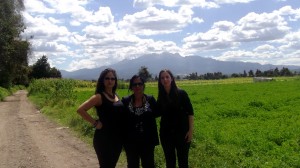
In Tlaxcala, when we went to visit River Xochiac, a red river because of companies’ toxic substances. The mountain behind us is the Iztaccihuatl volcano.
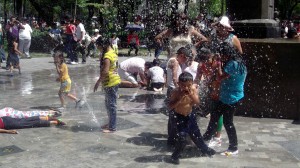
This is my favorite moment. We found a lot of families in a park during a warm weekend day. Kids were playing in the fountains. I wanted to jump in. I have named it “the joy of water”.
In a few hours I will be taking my flight back home. I hope I am able to meet all of you in november at Monterey, I’m sure we have a lot to talk about. I was already aware of environmental issues and water conflicts, but this experience has helped me to understand better the problem and go beyond the books. Being able to make visible these water problems and help such nice people has been truly enriching.
I want to thank Amy and Jessica for being such wonderful mates and Dr. Iyer for her suggestions and her talk about trusting ourselves and our work. I really feel we all are peacebuilders.
I still have some good stories to share, but next time I will be sharing them with you from Spain.
See you soon Mexico. I will come back.
The Kids of Gonda Boya
Posted by Phoenix McLaughlin in Ethiopia, Phoenix McLaughlin on August 10, 2014
It is impossible to take a picture of just one kid in a town in Ethiopia. Our site visit in the photo-hungry, kid-heavy village of Gonda Boya a few weeks ago made that clear.
We spent July 14th trough 21st in the Harar area in Ethiopia’s dry Eastern region. Harar itself is an impressive city with an impressive history to match; it’s an ancient city with 99 mosques and a distinct language packed into the confines of the old walls. But our work did not bring us within those walls—we had two topics of focus in the area nearby: the work of the Hararghe Catholic Secretariat (HCS) and the water situation in Gonda Boya. I’ll get to HCS in another blog post, because it was really Gonda Boya that brought out the kids in force. The village of 2,000 rubs up against the walls of Haramaya University, one of Ethiopia’s major universities, and has very limited water access.
Around mid-July, Katie and I made it out there and were shown around the village by a community leader. While walking around, we were almost constantly surrounded by children. There would be a long line behind us on the tighter paths, and a wide formation to our sides when we were in the open areas. Taking a picture of just one was not an option; as soon as one of us brought up our camera, they would all crowd around whoever or whatever was our intended target. Then they would all want to see the picture of themselves on our camera of course. Some would wander with us far from their home, and our host would occasionally scold them and scare them back. Some were very shy, but most were not. Some were carrying jerry cans of water.
Here they are:

Two at Sunset
Peaks and Valleys
Posted by Phoenix McLaughlin in Ethiopia, Phoenix McLaughlin on August 10, 2014
I wrote this a few days before returning home, around August 3rd or so. It was meant to be a brief explanation of why I hadn’t posted a blog in awhile, and I feel like it is still worth mentioning before I start doing back posts about the past few weeks.
The peaks and valleys, the highs and lows, the ups and downs—they are all major features of international travel. The midway slump is well documented among travelers, whether they are tourists or emigrants. As my lack of blogging recently can attest to, I was not impervious to the downturn on this trip to Ethiopia. The problem is easily diagnosed and it is simple to trace its origins, although a cure is unknown. The problem is that for the first month or so, the traveler is enamored with their new and unusual surroundings. The food is different, the language is different, the scenery is different, the smell is different, and so on. It is all exciting, and it is all noteworthy; it is also more blogworthy.
Or, I should say, it feels more blogworthy. The new country is no less fascinating, but after awhile, the wonder wears off. Things are not less interesting or less important, but their effect is diminished on the traveler. After my last blog post about seeing a graduation in Jimma, I reached that valley of shoulder shrugging. We continued to travel all over Ethiopia and our work really took off, but the intrigue of everyday life—the foundation of travel blogging—dissipated. With the onset of a traveler’s slump, it became much more difficult to sort out the interesting from the mundane, especially for presentation to a distant audience. Hence, I have been blogless.
But do not fear, for this is not a blog stating the events of the last three weeks shall never see the light of the internet. It is a small elucidation on the reason why my part of the blog has been empty recently (i.e. an excuse). Over the coming days and weeks, Katie and I will be putting a lot of work into creating the final outputs of our work, attempting to transform the huge amount of material we gathered into presentable tidbits of media for your viewing pleasure. During that time, I will surely be reflecting on the many places we’ve been and the many things I want to say over this platform, and I will work on filling in the gaps.
Last days in Mexico City
Posted by Ainhoa Martinez in Ainhoa Martinez, Mexico on August 9, 2014
As the fellowship on water conflicts is comming to an end, this week I have visited some places I haven’t been to and came back to my favorite sites of the city one last time.
First I visited “La Villa – Basílica de Guadalupe”, where the virgin of Guadalupe is placed. I told you in my first blog I didn’t want to leave Mexico without visiting this place and pray for my family. So I did.

The virgin of Guadalupe is where you see the light in the center. I thought the image would be bigger.
My favorite places in the city are “Viveros de Coyoacan” and the center of Coyoacan, so today I took my mp3 and went to take my morning walk through Viveros park, which ended at 3 pm. I was enjoying it so much and didn’t want to leave.
Women worthy of admiration
Posted by Ainhoa Martinez in Ainhoa Martinez, Mexico on August 7, 2014
The power of women gets stronger when we join our forces and I have been able to check it during my experience in Mexico.
In all the cases of water conflicts we found in Mexico, there were women fighting against injustice, threats, working to bring water to their homes, standing in the first row in every marching to defend their right to water.
I want to express my admiration for them through this blog. Because it is not only the social or administrative fight they stand up against, it is also a huge psychological and internal fight the one they struggle. Having to deal with severe threats (in first person and to their family members), police reprisals, suffering health problems and watching how people surrounding them are dying of illnesses caused by water pollution … All these struggles are difficult to deal with in your life and watching this women standing up against all and continuin their everyday life really inspires me. They are such strong people.
That’s why I wanted to send them a huge THANK YOU.
Thank you for inspiring me.
Thank you for receiving and welcome us as if we were a member of your family.
Thank you for sharing with us your struggles, worries and thoughts.
Thank you for not loosing your smile.
Thank you for being such brave women.
And thank you for being who you are, real people with real problems and a huge heart.

The lovely Graciela, a biologist, who looks after her family at the same time she works against injustice, threats and the pollution in Santiago River (El Salto, Jalisco). She has got a strong heart.
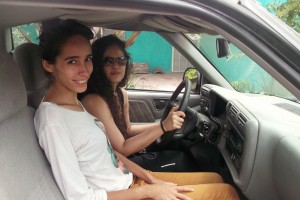
Sofia, Graciela’s daughter. Also working in the same issues as her mother does and helping in a research on food conflicts. She is such a brave young woman.

Mother Lupita and Ale from “Centro Fray Julian de Garces, Derechos Humanos y Desarrollo A.C.” in Tlaxcala. Their most important working issues are water pollution and women rights. They provide education to communities to promote human rights.
De todo corazón este blog está dedicado a ustedes, las mujeres mexicanas.

